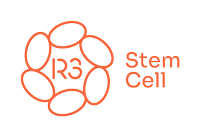
Stem Cell Therapy
Traditional medical treatments in the US have focused on relieving symptoms but not being able to actually repair any of the damaged tissue. Finally, regenerative therapies are now available which have the capacity to actually regenerate damaged tissue and provide relief from many debilitating conditions.
This includes such conditions as arthritis, tendonitis, COPD, Kidney failure, dementia, stroke, ALS, MS, autism and much more.
Often times, surgery for degenerative conditions ends up being a quality of life decision that can be delayed or avoided with regenerative treatments. At times, degenerative conditions may not even have a surgical option available such as with neuropathy, autism, migraines or degenerative neurological condition.
R3 Stem Cell’s Centers offer stem cell treatment for many conditions using stem cell material obtained from consenting donors after a scheduled c-section through an FDA regulated process. There are no ethical issues since no babies are harmed and no embryonic stem cells are used.
Amniotic and Umbilical Cord Stem Cell Therapy
Amniotic fluid and umbilical cord tissue contains an extensive amount of regenerative elements such as stem cells, cytokines, growth factors, exosomes, secretomes, mRNA and more. We refer to it as the “orchestra” of regenerative medicine due to all these helpful elements!
The amniotic fluid and umbilical cord, known as the products of conception, is acquired from consenting donors after a scheduled c-section with no babies being harmed. Once it’s processed the material is cryogenically preserved. The lab that R3 works with does NOT radiate the product and uses very little preservative. Therefore cell viability is maximized.
The FDA regulates the process of amniotic/umbical cord acquisition, processing, storage and usage very strictly. This is regulated as a biologic, not a drug, so FDA approval is not possible – only regulation.
Benefits of amniotic and umbilical cord tissue include
- No rejection as DNA antigens are all removed.
- Consistent amounts of regenerative cells compared with bone marrow or adipose which varies dramatically.
- Very high cell counts!
- Virtually painless procedure as no harvest is necessary from the patient.
- No steroid material.
- Fast procedure – takes approximately 30 minutes
- No down time.
- Outcome studies show over 80% effectiveness on average.
Outcomes
When it comes to arthritis and soft tissue conditions, outcomes are excellent for over 85% of individuals. These results are very good for even “bone on bone” arthritis. Patients are typically able to significantly delay or avoid the need for a joint replacement with these therapies.
For neurological conditions along with kidney failure or COPD, the excellent results have exceeded 75%. Often times, patients are able to avoid the need for dialysis, an organ transplant or a joint replacement.
What are the risks?
The risks of these treatments are absolutely minimal. We have not seen any rejection reaction as the DNA antigen factors have been removed. Over 10,000 cases have been performed by R3’s Centers over the past 6 years.
There is a typical risk of infection, bleeding, allergic reaction. These are seen in much less than 1% of patients.
PRP Therapy
PRP stands for Platelet Rich Plasma Therapy and involves a simple blood draw from the patient. This will range from 20cc’s to 60cc’s, which is considerably less than a pint of blood.
This blood is then placed in a kit that goes into a machine called a centrifuge, which spins rapidly for 12 minutes. This separates the blood into three layers, with the middle layer being known as the “buffy coat”. That’s what is used in PRP and contains the following regenerative materials:
- Concentrated Platelets
- A dozen growth factors
- White Blood Cells
PRP contains minimal stem cells, but does act to call in one’s body’s stem cells to assist with repair and regeneration. Not only can PRP therapy help by itself to assist with joint and soft tissue repair, it also can act as a “jump start” when used in conjunction with amniotic and umbilical tissue.
White blood cells create inflammation, which is the first phase of healing. The bottom line with PRP is that it may be very effective when used either by itself or in conjunction with amniotic/umbilical treatment.
There have been several studies showing the effectiveness of PRP therapy for joint and soft tissue pain. The therapy works very well for:
- Joint Arthritis
- Acute or Chronic Tendonitis
- Rotator Cuff
- Achilles
- Elbow
- Knee
- Sports Injuries
- Wound Healing
Since the treatment originates from one’s own blood, the risks are minimal to the patient.
If you or a loved one is suffering from joint and/or soft tissue pain, erectile dysfunction, knee pain, post-stroke, COPD, kidney failure, neuropathy or a neurologic conditions and you would like a free consultation to discuss regenerative options, call us at (844) GET-STEM today!
